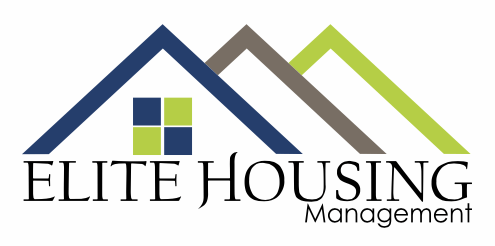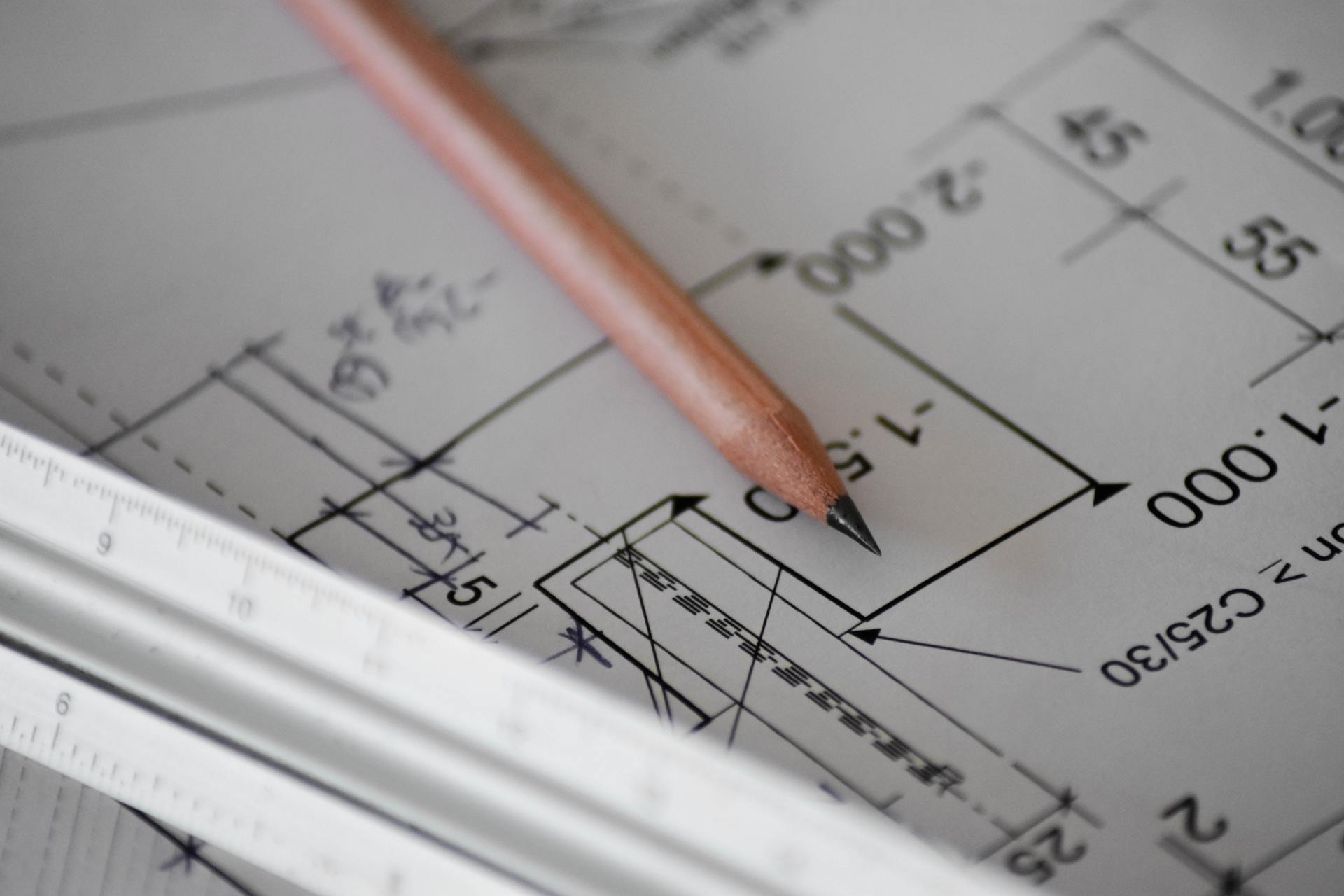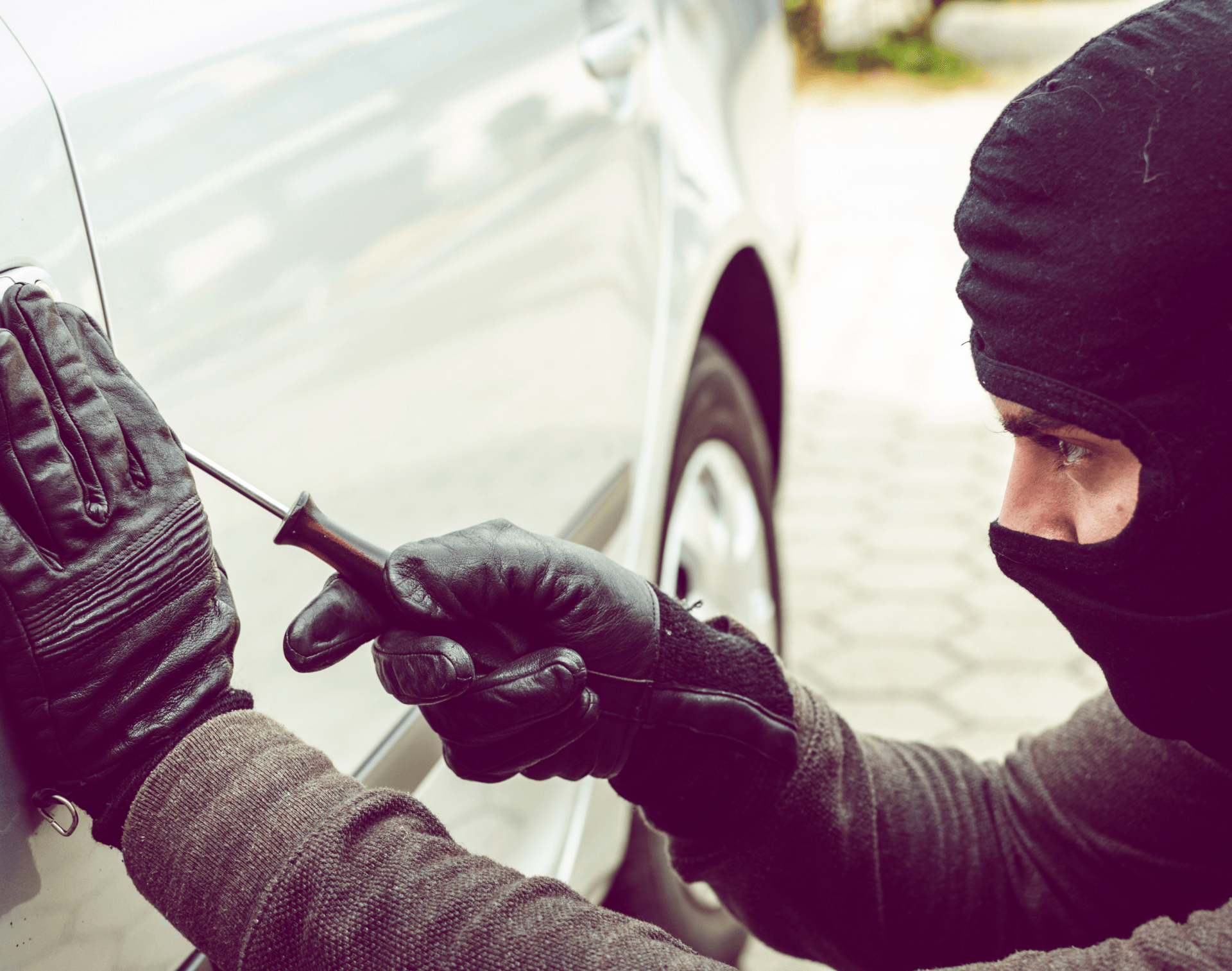
06 Jul, 2021
How to Boost Crime Prevention in HOA Communities The HOA plays a major part in making residents feel safe in their own neighborhoods. Here are some of the ways your HOA board can help improve safety and security in the community: 1. Limit Possible Hiding Places In an HOA neighborhood, criminals can conceal themselves in a number of possible places. Thus, the HOA board must make it hard for these criminals to hide. That means investing in street lighting, especially at night. In fact, lighting has been shown to reduce crime rates . Dark corners and dimly lit alleys should receive proper lighting. The HOA should place light fixtures around the entire neighborhood, making sure no single area is too dark. Regular maintenance and repairs should also be done to ensure all lights remain functional and bright. When lights in common areas and streets fail to work properly, residents can start to feel uneasy. They may begin questioning your board’s ability to fulfill responsibilities and use member assessments effectively. In addition to lighting, you should also invest in landscaping services to facilitate safety in the neighborhood. Hire landscapers to regularly trim hedges, bushes, and trees. When shrubbery grows above a certain height, they make for prime hiding spots for criminals. 2. Create Security Practices for Vacation Season It is easy to see why crime rates, especially ones related to theft and property, tend to rise during the holiday season. When homeowners go on vacation and leave their homes unoccupied, thieves and other felons see it as the perfect opportunity to cause trouble. Therefore, your HOA board should set up safety protocols specifically designed to protect empty homes. Ask homeowners to leave a light on even when they are away. Residents should also pick up their vacationing neighbor’s mail and, if possible, park an extra car in their driveway. All of this helps create the illusion of someone staying at home. 3. Get Help from Volunteers and Professionals There is only so much that your board can personally do to ensure resident safety. Sometimes, crime prevention in HOA communities means asking for help. You can ask volunteers from the community to regularly inspect the neighborhood for any signs of crime. A neighborhood watch, for instance, is a great way to increase resident safety and encourage involvement at the same time. The size of your community, though, will determine whether or not it is more appropriate to seek help from professionals. Hiring a security service can take the burden from your board and fellow homeowners. Residents also tend to feel safer when experienced professionals are in charge of security in the community. These professionals can make rounds to inspect the neighborhood’s safety or even work with resident volunteers. It is also a good idea to turn to your local police department for assistance. Work with a liaison or ask a police officer to speak at a gathering to orient residents on how they can ensure safety and security in the community. 4. Keep Residents Informed and Connected Making sure your residents stay in the loop is imperative when it comes to crime prevention in HOA communities. Keep residents informed on the latest news, including any recent crimes in or near the community as well as any changes to safety rules. You can do this with the help of a digital monthly newsletter and even include safety tips that residents can adopt. Keeping members updated can also promote a sense of community in your HOA. A closer community will make it easier for your board to set up and implement safety protocols. It also helps when neighbors are friends because they can keep an eye out for each other. To foster a close community in your HOA, make sure you schedule enough social events throughout the year. This will allow neighbors to get to know each other better and form a friendship. Additionally, you can incorporate safety orientations into your social calendar. 5. Enforce the Rules and Be Ready for Legal Issues A lot of HOA boards make the mistake of assuming residents will follow the safety rules set forth no matter what. Unfortunately, the reality is that many homeowners either forget about the rules or ignore them altogether. As a member of the HOA board, your job is to remind residents of the safety regulations in place as well as any new regulations or changes to existing ones. There will also be times when you welcome new members into the community. These new members do not know of your rules yet, so you must find a way to educate them or make the rules accessible to them. This will allow you to promote safety and security within the community at all times. In case a crime does take place, your HOA must be prepared. Familiarize yourself with your legal obligations. If a resident files a lawsuit against you, you must know how to handle them. This is when a board member with legal experience will come in handy. If you do not have such a member, though, it is wise to consult with an attorney who has dealt with homeowners associations before. An HOA attorney can help you navigate the many confusing legalities of every type of situation. What Is the Role of the Police? Although your HOA has rules within your community, it is not up to the police to enforce them. The police technically have no authority to deal with violations of HOA covenants. However, if the violation in question is related to illegal activity, then the police do have authority over it. If a resident has committed an illegal act, inform the police immediately. Whatever the case may be, though, it is essential that you have evidence to back up your claim. If you do not have any form of proof, then the police are unable to conduct an investigation. The same goes for HOA violations. Without proof, the HOA cannot send a violation letter to the homeowner with the alleged violation. It Takes a Village Crime prevention in HOA communities is not something that the HOA board can single-handedly accomplish. It takes an entire community to keep the neighborhood safe. In the same way HOA board members take action to ensure safety, residents must also do their part whether that means volunteering or even just keeping informed.

By James Lowdell
•
14 Jun, 2021
Here are some of the ways you can use to recruit HOA board members: 1. Inspire with Your Recruitment Letter Sometimes, residents just need a little nudge in the right direction to get them started on the path of serving on the HOA board. And that all begins with your recruitment letter. Your board member recruitment letter needs a powerful and moving message to inspire residents. You can do that by outlining what the HOA board does for the community and its members. See to it that you stress how essential board member roles are to the success of the association. Additionally, your recruitment letter should include hints as to what kind of members you’re looking for. Keep in mind that the HOA board should always be in search of new ideas. Encourage residents to share their thoughts and make the letter as inviting as possible. 2. Make Homeowners Feel Their Talents Are Needed A lot of homeowners feel apprehensive about volunteering for the community because they don’t think they’re needed. They believe they don’t possess the skills or talents required for the job. This is a common perception that homeowners have because they think the only thing the board does is financial management. While managing the HOA’s finances is certainly an important aspect of the job, it’s not the only aspect there is. HOA boards also need members who are equipped with expertise and skills in other areas such as community management, information technology, construction, and design. Any talent they have is valuable, and that will help you entice more residents into joining the board. If you feel like your board needs someone with great organizational skills, then it’s worth personally approaching candidates who possess such skills. Let them know you need their talents and how the board can greatly benefit from their participation. 3. Use Complaints as an Opportunity to Recruit Members Many homeowners have complaints — that’s just the way it is. If a particular homeowner informs you of their dissatisfaction with how your board is running the show, that’s not necessarily a bad thing. In a lot of ways, complaints can be useful to your board. However, you have to learn how to separate the homeowners who make petty complaints just for the fun of it from the ones who actually turn complaints into useful suggestions. It’s the latter that you need to keep an eye out for. Such complaints give you a chance to encourage passionate homeowners to get involved. If homeowners approach you with complaints, try to look beyond them and determine whether the homeowners want to contribute something to the community. Perhaps you can convince them to play a more active role in helping the association improve. It’s also important to address the concern they bring up. This will make them see that the board cares and has power enough to make positive changes in the community. Plus, it gives you an opportunity to personally talk to them about board recruitment as you give them updates on their issue. 4. Assign Hesitant Recruits to Committee Roles First Far too often, homeowners feel reluctant to join the HOA board because of the amount of work involved. Many are afraid to take on so much responsibility, especially if it’s their first time. After all, joining the board is a big commitment. A great way to assuage their fears is to start these new recruits in positions that don’t require too much commitment. Let them serve on a committee of their choice first. From there, you can slowly encourage them to take on bigger roles and make them see that serving on the board isn’t as scary as they made it out to be in their head. 5. Do Something Marketing for Your Board Out of sight, out of mind — that saying applies to the HOA board a majority of the time. Because homeowners don’t see board members often, they usually forget that the board even exists. This is especially true if the board is functioning like a well-oiled machine. It’s hard to notice the board if you don’t have anything to complain about. Although members shouldn’t join the board for the fame or added clout, there’s still value in marketing the board to homeowners. By letting homeowners see how important board members are to the community, they’re more likely to develop an interest in serving the community in the same way. Make sure all homeowners are aware of the opportunities for participation that exist in the community. Communicate the ways people can get involved using your newsletter or HOA website. You can also personally approach members as well, especially if you have your eye on a skilled resident. 6. Be Ready with Answers Interested homeowners will naturally have a ton of questions to ask about the open board positions. Some of the questions you might encounter include: ● Do you think I have enough experience for the job? ● How much time do I need to commit to the role? ● What sort of tasks should I expect to carry out? You need to know the answers to these questions, so make sure to prepare yourself ahead of time. Make sure your answers don’t scare potential candidates away. But, you should also be as honest as you can about the requirements of the job. This is also a great opportunity for you to educate interested homeowners about the board position. 7. Appoint Homeowners, If Your Bylaws Permit This won’t apply to all homeowners associations, but some governing documents do allow board members to simply assign a member to a board member role. If you already know someone who is perfectly qualified and suited for the position, then appointing them is a no-brainer. This works out especially well in the event that a sitting board member needs to resign from their position midway through. Of course, don’t just appoint someone out of the blue. Not a lot of homeowners will take kindly to a surprise designation. Make sure to first talk to the candidate to gauge their interest in the position. A Strong Board Starts with Recruitment Your HOA board is only as good as the members that make it up. Therefore, you must recruit HOA board members who are willing, capable, and passionate about the community. That’s often easier said than done. But, armed with these tips, you’re definitely on the right path.

18 May, 2021
Why Do You Need to Improve Indoor Air Quality? Indoor air quality refers to the quality of air within a building or structure. The presence of air pollutants has an impact on the health and comfort of its occupants. The most common sources of air pollutants include building materials, cleaning products, fuel-burning appliances, HVAC systems, moisture, and tobacco smoke. Exposure to air pollutants can lead to a variety of health issues including eye, nose, and throat irritation, dizziness, headaches, fatigue, and allergies. Long-term exposure, on the other hand, can lead to heart disease, respiratory disease, or cancer. In a residential community, the HOA is responsible for maintaining the indoor air quality in common areas such as the clubhouse, function rooms, fitness centers, and offices. This is so that homeowners can enjoy HOA amenities safely and comfortably. Thus, HOAs should make sure to include indoor air quality in their maintenance plans. 5 Ways to Improve Indoor Air Quality in Your HOA Here are great ways to improve indoor air quality in the common areas of your community. 1. Lead and Asbestos Removal Older communities may have been constructed with lead and asbestos, which we now know are toxic materials. When asbestos particles are dislodged, they can be easily inhaled. It can lead to shortness of breath, persistent coughing, fatigue, and chest pain. Long-term exposure can also lead to asbestosis, mesothelioma, and lung cancer. Meanwhile, when lead-based paint chips or crumbles, these particles can also be inhaled. Lead is most dangerous for older adults, pregnant women, and children. It can lead to anemia, kidney damage, or brain and nervous system damage. HOAs should conduct a thorough inspection of common areas to see if lead-based paint and asbestos were used in construction. Have these toxic materials removed by professionals as soon as possible for the safety of your homeowners. 2. Improve Air Circulation Excess moisture can promote the growth of mold in basements, bathrooms, and other areas without proper ventilation. Black mold is a major health risk; inhalation of spores can cause chronic fatigue, chronic coughing, and persistent headaches. To improve indoor air quality, HOAs can install additional bathroom vents and humidifiers in common areas. Adding plants throughout common areas can also reduce humidity. Don’t forget to open doors and windows to increase air circulation throughout the day. 3. Switch to Eco-Friendly Cleaning Products A lot of commercial cleaning products contain volatile organic compounds (VOCs). When these compounds react with air molecules, they form particulate matter and ozone that can be hazardous to your health. If you want to improve indoor air quality in HOA common areas, consider switching to eco-friendly cleaning products. Green cleaning products are just as effective but do not contain hazardous chemicals. Apart from improving air quality, becoming a green HOA can also help save the environment. 4. Keep Floors Clean, Vacuum Regularly Many air pollutants settle on floors and when kicked up by foot traffic, are recirculated back into the air. As such, thorough and regular floor cleaning will help improve indoor air quality in your HOA. Carpeted common areas should be vacuumed at least twice a week. Make sure to use a vacuum with a HEPA filter to trap air pollutants and prevent them from recirculating back into the air. Hot water extraction is also recommended every 6 months. Meanwhile, non-carpeted floors should be mopped and vacuumed at least twice a week. 5. Ban Smoking in Common Areas Smoking not only affects the health of the smoker but also everyone who inhales second-hand smoke. HOAs can ban smoking in common areas to protect indoor air quality and the health of the entire community. If there is a need for it, you can set up a smoking area that is far enough from the common areas. Make sure that this rule is strictly implemented and all offenders should face the consequences. If you are collecting fines, the money can be reinvested into air cleaning products for the HOA common areas. Indoor Air Quality and Quality of Life in Your HOA Indoor air quality in HOA common areas is not often thought about, but it can have a major impact on the quality of life of your residents. The first step is to pay attention to your common areas and identify potential sources of air pollution. Next, consider the five ways to improve indoor air quality to safeguard the health of your community.

By Duncan Shea
•
29 Nov, 2020
HOA Board Qualifications: How to Become a Good Board Memb er Though they are voluntary positions, board members play a crucial role in the success of an HOA. Board members are entrusted to make important decisions that promote the best interests of the entire community. As such, running for a position on your HOA board is a decision that one should not take lightly. If you want to be a successful and effective board member, here are important qualities that you must possess. 1. Ability to Take Charge You don’t need to be a natural-born leader to join the HOA board. However, a board member must be able to take charge when needed. You should use your strengths to inspire and influence the members of your community. A good leader also knows their weaknesses. When faced with difficult situations, it’s important to know how to delegate responsibility. 2. Remain Objective and Unbiased Board members have a f iduciary duty to the HOA . They must always act in the best interests of the community. You must be able to remain objective and unbiased in your actions and decisions, even if it means that some homeowners will not be happy. Being a board member isn’t about gaining favors from others or serving your own agenda. It takes tenacity and strength to be able to stand by your decisions and be affected by negative criticism. 3. Can Nurture Relationships During their tenure, board members must deal with homeowners, vendors, management companies, insurance providers, other HOAs, and so on. Nurturing these relationships can make you a more effective board member. By establishing trust and having positive connections, you’re able to gain the cooperation of other people. Thus, it will be easier to implement policies and protocols for your community. 4. Can Mediate and Resolve Conflicts It’s natural to have conflicts between board members and homeowners. However, a good board member will know how to meditate in order to come to a resolution that is amenable to both parties. If there are difficult decisions to be made, a good board member will know how to take them to the homeowners and explain why it must be done. In addition, you must be able to keep an open mind and stay calm. Listen to what your homeowners have to say and acknowledge how they may be feeling in that situation. 5. Keep an Open Line of Communication A good board member can keep open lines of communication with homeowners, vendors, and other board members. It will be hard to get things done if you are always unavailable or out of reach. Homeowners must also feel that they can turn to you when they have issues or concerns regarding the community. This paves the way for positive communication within the community. It also helps lessen misunderstandings and conflicts. 6. Eager to Serve the Community Board members do not get paid for their service to the HOA. This must be clear to anyone who is planning to join their HOA board. A good board member is willing and eager to serve their community without the expectation of being paid or rewarded. The interest of the community at large should always take precedence. Board members do not serve their personal interests. 7. Always Willing to Learn Elected board members do not necessarily need to have a background in HOA management. However, they must be willing to learn the intricacies of association management including state and local laws, financial management, and governing documents. A good board member has the initiative for continued education to be effective and successful in their role. Do You Possess These HOA Board Qualifications? Being an HOA board member is not an easy job. You will be faced with difficult decisions and may even run into conflict with homeowners from time to time. However, it can be extremely rewarding to see your community grow and flourish. If you possess the HOA board qualifications above, consider running for a position during the next elections. You can channel your innate skills and talents and use them to make an impact on your community and fellow homeowners.
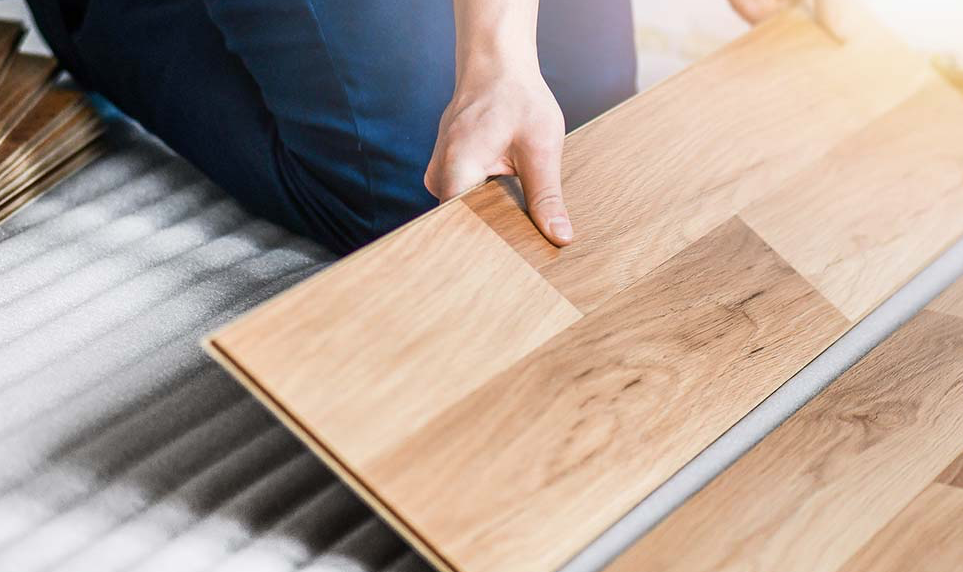
By Duncan Shea
•
15 Nov, 2020
HOA Home Renovations: The Association’s Role First of all, what is a homeowners association anyway ? Simply put, a homeowners association is a private association or governing body that manages a residential development or community. It is governed by a set of board members, known as the HOA Board of Directors, elected into position by fellow homeowners. Members who live within the HOA community are required to pay regular dues. In turn, the HOA uses these funds for the community’s maintenance and upkeep. An HOA’s main function is to maintain and improve the property values of the homes in the community. To do this, homeowners must abide by a set of covenants and rules that dictate how they can and cannot behave. It also includes restrictions on what you can and cannot do with your property. If you plan on renovating your home in the near future, there is a good chance you must seek approval from your HOA first. Since restrictions can vary from HOA to HOA, it is best to refer to your community’s own governing documents — usually the CC&Rs — to learn what provisions you must follow. What HOA Home Renovations Require Approv al? Although not all HOAs have the same restrictive covenants in place, most associations share certain commonalities. This includes needing to obtain approval from the HOA board or the Architectural Review Committee for certain changes to your property. It is important to remember that part of improving property values is maintaining curb appeal . Homeowners associations accomplish this by ensuring that all properties in the community look attractive and conform to the standards set by the HOA. This could mean barring you from painting the exterior of your house a certain color or preventing you from cutting down certain trees. But, HOA approval is not limited to changes to the exterior of your property. There are also HOAs that require homeowners to seek approval for interior renovation projects. This is due to the fact that some interior improvements can affect other homeowners. For instance, retiling a bathroom might have an effect on the room’s waterproofing and, therefore, lead to flooding. Other examples of renovation projects, both exterior and interior, that typically require approval from the association include: Rewiring Flooring Exterior painting Ceiling replacements Roof replacements or additions Gutters Front door replacements Landscaping Wall removal Room additions Plumbing Kitchen renovations Other major renovations What HOA Home Renovations Do Not Require Approval? On the other hand, homeowners can usually perform minor renovations or repairs without the need for HOA approval. This includes changing light bulbs or lighting fixtures (such as switches and electrical outlets), changing bathroom fixtures such as sinks and showers, and changing the trim in your interior. Again, it differs from community to community. Therefore, it is best for you to check with your HOA first to determine which projects you can undertake without approval. How to Get Approval from Your HOA As with restrictive covenants , the specific procedure for how to get HOA approval for renovation projects varies from association to association. Generally speaking, though, the process usually requires you to fill out an application form consisting of the renovation project’s details. It is worth noting that having an expert help you accomplish the form will boost the likelihood of receiving approval from the HOA. When it comes to renovation applications, it is best to provide the HOA with as much information as possible. This way, the HOA Board or the ARC can assess the application with complete details. A typical application form will ask you for the following information: The project’s timeline (including start date, completion date, and hours of the day the renovation will take place) The type of renovation you plan to do and how it will affect common property Any common areas that you will use for the project Types of materials you will use in the renovation A list of contractors, tradespeople, and workers involved in the project as well as their licenses Some HOAs will provide you with a list of pre-approved licensed contractors. Otherwise, you will need to look for one yourself. Contractors must be fully licensed and insured as well as have all the required permits to work on your renovation project. After filling out the proposal, you will then need to submit it to the appropriate governing body. That is either the HOA Board or the ARC. They will then need time to examine your proposal. Sometimes, the approval process will take longer than expected because of certain procedures such as verification of the contractor’s license and insurance. Usually, though, you will need to wait 14 to 30 days. What Happens If You Don’t Get HOA Approval? Some homeowners choose to go behind their association’s back and proceed with a renovation project without approval. This, however, only spells disaster. If you decide to start HOA home renovations without approval, the HOA will likely direct you to halt the project. The HOA may also ask you to redo the project from start to finish if it does not meet the association’s standards. Remember to always seek approval so that you do not waste time and money. Working on the Renovation Project After receiving approval for your proposal, you can start the actual renovation process. Keep in mind that renovations can create a lot of noise and disrupt peace in the neighborhood. Therefore, you must schedule work within the construction hours the HOA approved. This is typically between 7 a.m. and 7 p.m. on weekdays and between 9 a.m. and 9 p.m. on weekends. It is also a good idea to notify your neighbors of the impending work. Let them know how long the project is expected to last and other pertinent information. Your neighbors will likely have questions or even some grievances, so prepare yourself. Knowing the answers to all the important questions will help you minimize conflict. Additionally, you must make sure to follow the requirements set forth by the HOA. Store the work materials in the proper place and dispose of construction debris in the right way. Sanitation haulers do not allow homeowners to throw any construction materials in the trash receptacles. You must also see to it that all construction materials and garbage are properly disposed of after the completion of the project. The Bottom Line Many homeowners find it tricky to navigate through the requirements of HOA home renovations. But, as long as you familiarize yourself with the community’s CC&Rs and follow the rules religiously, you will not have a problem.
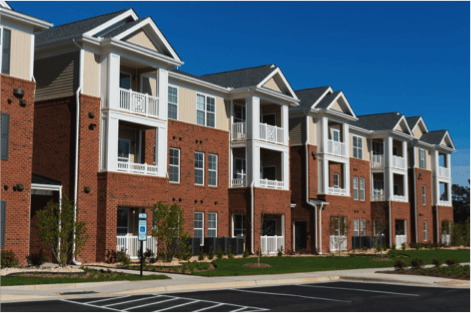
By Appfolio Websites
•
17 Aug, 2020
Tracing the Source of Water Damage Behind Brick Walls Can water leak through walls? To put it simply, yes, water can leak through walls, even those made of brick. In fact, many homeowners encounter brick wall leaks. If that is so, then why do people still use brick walls? There are many advantages to using bricks in a home or building. Bricks add a flair to the overall design of a structure and also last a very long time. The good news is, most contractors have the necessary experience to put up brick walls for a construction project without causing future problems. However, there are some who fall through the cracks. When this happens, owners can expect brick water infiltration damage. Flawed construction can result in leaky walls in brick buildings, ultimately leading to water damage. If you think your association’s structures may have water damage behind brick walls, the following information can help you out. How Long Can a Brick Building Last? Brick is a sturdy material and typically survives the full length of a building’s lifespan, which, barring natural disasters or large fires, can be a hundred years or more. Older brick buildings, though, those built with bricks two or three wythes thick, tend to last longer than buildings that only sport a brick veneer. Either way, faulty construction can result in water ingress and damage behind your brick surface. Improper construction comes in many forms, though in the case of water damage, it normally arises from a lack of drainage systems. This is why it is imperative that you schedule regular inspections of your structures to pinpoint signs of potential brick wall water damage. The Importance of a Secondary Drainage System A secondary drainage system can help keep water from seeping into brick walls. This also gives installed sill flashings and kick-out flashings a weather-resistant blockade, thus preventing damages. The presence of flashings allows water to travel outside of the walls. This way, even if water enters around fenestrations and through the brick, it will only run down the barrier. This will also prevent damages to the framing and sheathing of your home. A Tell-Tale Sign of Water Damage Behind Brick Walls A common indication of water infiltration is efflorescence . These are white salt deposits that settle on brick surfaces. Improper construction is usually to blame when it comes to efflorescence, as water ends up trapped within the wall cavity. It is much easier to remedy potential water damage when efflorescence is not yet visible. However, if you catch efflorescence forming, then that means the wall is already soaked in water. This happens in the absence or clogging of a drainage plane as water is forced to travel through the bricks. It is important to acknowledge efflorescence when you see it. Its appearance means that water damage has already happened and you must expect to pay for costly repairs. If you find efflorescence crystallizing on your brick surfaces, call a professional to make an assessment immediately. Why Do Contractors Make Mistakes With Brick Constructions? Ideally, all contractors would exercise due diligence and install bricks the proper way at all times. Unfortunately, the reality is that some contractors tend to be careless. A typical mistake that contractors make is failing to remove the extra mortar from the back of bricks. When this happens, the mortar will dry and set not long after. This solidified mortar will prevent water from running down the weather-resistant barrier. With nowhere else to go, the water will accumulate and the barrier will start to wane. Soon enough, the water will find itself under the barrier and behind brick walls. These things can happen right under your nose without the slightest hint in the early stages. Dealing With Water Damage Behind Brick Walls The first thing you must do if you suspect water infiltration damage is to hire an expert to testify in court, preferably a forensic engineer or architect. Have a professional inspect the brick surface and complete moisture probes to determine how far the water has permeated the wall. This will help discern whether the water has already damaged the framing and sheathing as well. If the moisture levels inside the walls are high, then you must have an expert perform test cuts to expose the framing and sheathing. This will allow you to check whether your insurance policy can cover the damages. After that, your HOA must evaluate what potential damages you can collect from the negligent parties in a lawsuit. Who Is the Party at Fault? If your HOA intends to go after the negligent party responsible for the water damage, you must first determine who was involved in the construction process. After all, there are a number of possible culpable parties. Was it the architect who failed to recommend the right design procedures? Was it the contractor who incorrectly installed the flashings? Or was it the mason who was too lazy to place the bricks properly? Could it have been the technician who failed to install the windows and doors properly that led to water infiltration? Were the kick-out flashings installed incorrectly, thus, implicating the roofer? Or could it have been the general contractor who skimped out on high-quality materials and labor just to save a few pennies? Third-party inspectors could have also played an indirect role by missing a few key details. It could even be traced back to the brick manufacturer who cut corners on quality assurance and weakened the material’s structural integrity. Before your HOA decides to take legal action, you must first rationally diagnose the situation and determine the source of the problem. Evaluate each party involved and whether or not they can realistically shoulder the damages. If you come to the conclusion that a lawsuit is possible, then look for an experienced attorney to represent your association. How an Experienced Attorney Can Help Depending on the severity of your situation, it is possible to collect a large sum of money in damages from the culpable parties involved. An attorney with the necessary expertise and experience with such cases can help your HOA win the lawsuit. Additionally, an established attorney can gather strong evidence and recommend an expert witness that can significantly impact the outcome of your case. When deciding on which attorney to hire, your HOA must consider a number of candidates. Interview your prospects and determine whether they have experience in handling similar cases. Look After Your Brick Walls Associations encounter several masonry issues on a regular basis, but water damage behind brick walls is definitely one of the most troublesome. Although brick walls give your community an elevated appeal, they can also be a source of problems when installed incorrectly. This is why it is important to hire reputable contractors from the get-go. And, if you are faced with water damage, address the issue head-on, discern who is to blame, and take necessary steps to remedy the situation. Note: The original article appeared on HOAManagement.com .

By Appfolio Websites
•
29 Jul, 2020
How to Construct an HOA Disaster Management Plan HOA disaster planning is an often challenging aspect of community management, particularly because there are a lot of moving parts that must be taken into account. The necessary requirements and protocols of a disaster emergency plan are largely contingent on the location of your HOA. It is important to have a disaster management plan for HOAs to curb liability. Improper disaster management can result in a number of unwanted issues, including lawsuits. A homeowner may sue the HOA with the claim that the association acted negligently in its planning and execution of emergency procedures. As such, HOAs must continue to look for ways to enhance their HOA disaster management schemes to keep residents protected. Whether your HOA board is planning or updating your current disaster management plan, it is imperative to keep the following considerations in mind: 1. Factor in Your HOA’s Location It is important for your association to consider the location of your community. If you can list down the different risk factors affecting your locale, it will serve as a good base for the types of emergency policies you intend to create. For example, if your community is located in an area that experiences wildfires often, a fire disaster plan is imperative. Similarly, if you reside in a place with frequent earthquakes, earthquake emergency planning is essential. Apart from factoring in potential disasters according to your geographic location , your HOA must have protocols in case of disease outbreaks or health pandemics and even terrorism. These events do not happen all the time, but it helps to stay prepared for them. 2. Think About the Age of Your Community Members In addition to your location, your HOA must also consider the age of your community’s members. Every community is different, so your predominantly young community may have a different approach to disaster planning than a neighboring community with mostly aging residents. Take the age of your community’s members into consideration and gear your planning to serve their needs. A community with a lot of elderly residents, for instance, should think about mobility issues. Senior members of your community will have a harder time evacuating their homes than younger residents. Similarly, you should take children into account as well. 3. Consider the Languages Your Community Members Speak The United States is home to many immigrants and diverse cultures. As such, not everyone in your community may know how to speak English very well. HOAs must stay aware of this fact and carefully consider the languages spoken in their community. An easy way to gauge this is to conduct a survey of your residents. If your community has a large percentage of Spanish speakers, then it is a good idea to make your HOA disaster management plan available in both English and Spanish. This extra step is a necessary one since even those fluent in conversational English may be confused by certain terminologies. Having translations of the emergency guidelines can greatly help the community and keep everyone safe. This can also protect your HOA from potential legal liability. 4. Construct a Community Disaster Relief Plan After examining the potential local geographic dangers your community may face, it is time to create your disaster relief plan. This plan should include pertinent information such as the level of involvement you can expect from your insurance provider. It must also address specific problems like inhabitable units, the possibility of homeowners entering their properties to salvage items, and any professional inspections necessary prior to allowing residents to return to their homes. It is important for your HOA and all members to carefully review these plans and clarify any misunderstandings. Unclear guidelines can lead to serious harm or injury, resulting in legal trouble for your association. Furthermore, the disaster relief plan should clearly indicate the responsibilities of HOA board members in the event of an emergency. Doing so will allow everyone to understand what role they play in case of a disaster. State what community members should do before, during, and after the event. It is also a good idea to reach out to emergency planning consultants when creating your plan. 5. Disseminate and Educate An HOA disaster management plan will be of no use if community members are not made aware of it. Therefore, your HOA board must make sure to communicate and educate all residents on the plan so that they can understand it. To do this, you must organize meetings prior to the beginning of a season that poses a threat to your community. For example, you must hold fire disaster preparedness meetings before the fire season when there is an increased risk of wildfires. Residents can easily forget the disaster guidelines with time. Moreover, new residents who are unaware of the disaster guidelines can move into the community. As such, you will need a refresher session every once in a while, at least twice a year is recommended. 6. Post Your Plans on Your HOA Website Homeowners associations have moved into the future, and that means adopting the use of HOA websites. There are many benefits to having a website for your community, and one of these is the easy dissemination of information. If you have a website, make sure to post your plans there for everyone to see. Any changes to your plan should also be reflected on your website. This way, if a homeowner has a clarification on a guideline, they can simply refer to your HOA website without hassle. 7. Use Your HOA Newsletter to Your Advantage Another communication tool that your HOA can use is a monthly newsletter. If you have one, make sure to use it as an opportunity to educate your community members about disaster planning. Consider including a timely article about disaster preparedness. For instance, if the hurricane season is about to start, you can post an article about it as a way of reminding residents about your HOA disaster management plan. 8. Lessen the Risk of Legal Liability For homeowners associations, natural disasters can give rise to legal troubles. Your HOA must do what it can to protect itself from potential legal troubles caused by natural disasters. Residents typically file lawsuits against the HOA on the grounds of negligence, citing what the association should have done to prevent a disastrous event or protect the community from it. To protect your HOA, you must keep residents from thinking that the association is in any way negligent by having a disaster preparedness plan. 9. Cooperate with the Office of Emergency Management Homeowners associations in the United States can coordinate with the Office of Emergency Management to obtain information relevant to local threats. This will help communities ascertain which disasters to plan for. If your association can match your plan with local law enforcement protocols, you can be assured of safer procedures that residents can abide by. This, in turn, will result in a higher level of satisfaction from residents. 10. Keep Fire Protocols in Mind Fire season is year-round , so depending on where you live, you must have strict fire protocols to adhere to. See to it that your HOA is ready with the necessary emergency procedures in case of fires. Furthermore, your HOA must take preventive measures to curtail the damages and injuries in the event of a fire. Your HOA can also curb the risk of wildfires by applying specific regulations related to the landscape of the community. This includes trimming shrubberies and getting rid of nonessential materials that could speed up the wildfire. These guidelines can help protect the community and its residents from harm caused by fires. 11. Establish an Electronic Emergency Alert System Many associations have taken advantage of electronic emergency alert systems, particularly larger communities. These advanced systems can send text messages and emails to residents concerning emergency situations. Consider allocating room in your budget to invest in such a sophisticated system. This added benefit will not only attract prospective residents but also protect current ones in your community as well as safeguard your HOA from a potential lawsuit. After obtaining an alert system, make sure to keep it up-to-date with everyone’s current contact information. This way, you can be assured that all residents receive pertinent information in a prompt fashion. Disaster Preparedness Literally Saves Lives Natural disasters are nothing new. And although a number of them can be anticipated to a certain extent, others occur out of the blue. A homeowners association must do its part to stay prepared for any scenario, and an HOA disaster management plan is essential if you want to maintain a safe and happy community. If your HOA has yet to construct a disaster plan, do it now. Note: The original article appeared on HOAManagement.com. Note: The original article appeared on HOAManagement.com .
Alabama
7:30am - 5:00pm Monday - Thursday
7:30am - 11:30am Friday
